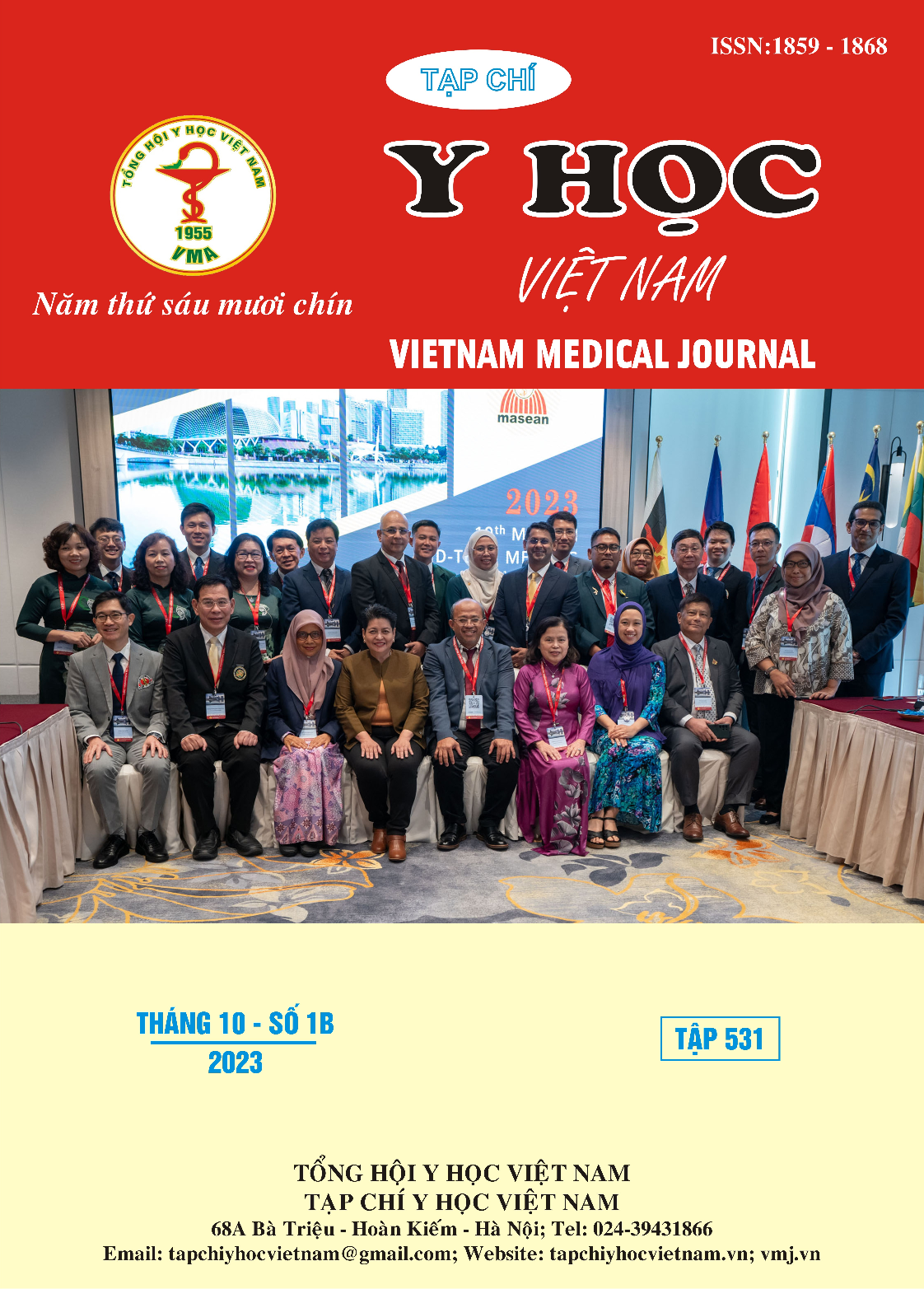TREATMENT RESULTS OF PATIENTS WITH NON-METASTATIC MELANOMA AT VIETNAM NATIONAL CANCER HOSPITAL
Main Article Content
Abstract
Objectives: Study on some clinical and subclinical characteristics of cutaneous melanoma patients with distant metastatic stage (I, II, III) and evaluate the treatment results of the group of patients studied above. Subjects and research methods: A cross-sectional descriptive study on cutaneous melanoma patients with stage I, II, III skin cancer treated at K hospital from January 2018 to December 2021. The Kapan – Meier method is being used to estimate time to treatment failure and overall survival. Results: The average age was 57.29 years old, the youngest patient was 3 years old and the oldest one was 93 years old, the common age range from 40-79 years old accounted for 73.9%. Tumors are often located in the lower limbs (71.0%). Most tumors were hyperpigmented (96.8%), of which mainly dark brown. The dominant form of warts and ulcers is 32.3% and 35.5%, respectively. Tumor thickness > 4mm (T4) accounted for the highest percentage (61.3%), Clark V (29%), multiplying rate >6/mm2 was 35.5%, the rate of lymphoma infiltrating the tumor was 48, 4%. The rate of patients without lymph node metastasis was 51.6%. The proportion of patients with stage I, II, and III was 6.5%, 45.1%, and 48.4%, respectively. The 1, 2, and 3 year disease-free survival rates were 67.7%, 38.7% and 19.4%, respectively. Overall survival at 1, 2, and 3 years was 77.4%, 51.6% and 45.2%, respectively. The 3-year overall survival in stages I-II and III was 73.3% and 18.8% respectively. Conclusion: Cutaneous melanoma is common over 40 years old. Tumor location is most common in the lower limbs. In most cases there is a change in tumor color and morphology. Tumor thickness > 4mm accounts for the highest rate. The rate of patients without lymph node metastasis was 51.6%. The 1, 2, and 3 year disease-free survival rates were 67.7%, 38.7% and 19.4%, respectively. Overall survival at 1, 2, and 3 years was 77.4%, 51.6% and 45.2%, respectively. The 3-year overall survival in stages I-II and III was 73.3% and 18.8% respectively.
Article Details
Keywords
Cutaneous melanoma, clinical features, subclinical features, treatment results
References
2. Marc Hurlbert (2020). 2020 Melanoma mortality rates decreasing despite ongoing increase in incidence. Melanoma research Alliance.
3. Vũ T.P., Vũ H.T., và Nguyễn Đ.B. (2021). Đánh giá kết quả sau phẫu thuật triệt căn ung thư hắc tố da giai đoạn II, III tại bệnh viện K. Tạp Chí Học Việt Nam, 509(2).
4. Masback A, Westerdahl J, Ingvar et al. (1997). Cutaneous malignant melanoma in southern Sweden 1965, 1975 and 1985 – prognostic factors and histologic correlations. Cancer, 83, 275-83.
5. Incisional biopsy and melanoma prognosis: Facts and controversies - ScienceDirect. .
6. Azimi F, Scolyer RA, Rumcheva P, et al. Tumor-Infiltrating Lymphocyte Grade Is an Independent Predictor of Sentinel Lymph Node Status and Survival in Patients With Cutaneous Melanoma. 2012;30(21):2678-2683.
7. Đào Thị Thúy Hằng. Đặc điểm giải phẫu bệnh và một số yếu tố mô bệnh học mang ý nghĩa tiên lượng trong ung thư hắc tố da. Hà Nội Luận văn thạc sỹ y học, Đại học Y Hà Nội; 2017.
8. Đào Tiến Lục (2001), Nghiên cứu đặc điểm lâm sàng, mô bệnh học và một số yếu tố tiên lượng của ung thư hắc tố. Luận văn bác sỹ nội trú, trường đại học Y Hà Nội.


